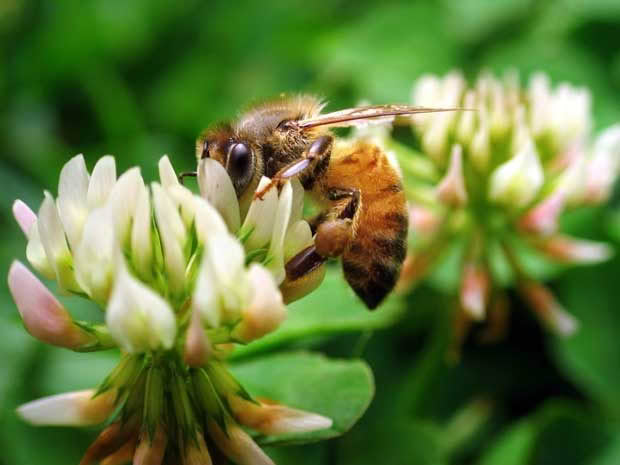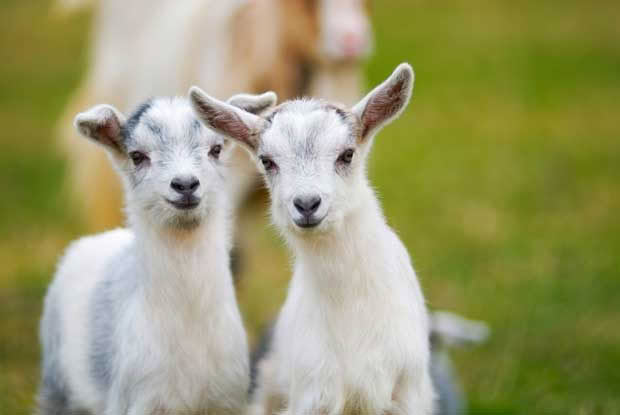10+ pasture picks for bees, poultry, pigs and goats

A bee foraging on clover.
Spring is a great time for sowing new pasture, but what do you choose if your stock are a bit out of the ordinary?
Words BHU, www.bhu.org.nz
BEES
Pasture: Clover, chicory
Foraging: clumps, fields, shelterbelts (>100 m from hive), pollen supply (willows, Acacia spp, pines), propolis supply (poplars and pines)
A hedgerow-sized shelter from cold winds will improve spring foraging, and can include rosemary (early flowering) and Acacia spp. Hives should be shaded to prevent high temperatures in mid-summer (which otherwise result in too much expenditure of ‘hive energy’ on actively fanning down the temperature) but ventilation should not be restricted by such a design for shade.
POULTRY
Pasture: Good herb ley mixture with emphasis on chicory and other forbs as well as legumes.
Foraging: can provide some control of groundcovers and orchard understorey, benefit from areas of high insect life, eg maggots from manure piles, orchard windfalls, areas with crop residues, specific forage crops can be planted, eg beet and comfrey mixtures.
Hens can make good use of weeds in some areas including cleavers, oxalis and dandelion. It is recommended to have a variety of herbs including a very small amount of wormwood to aid in general health and intestinal worm control. Shelter is important for protection from cold winds and providing shade. Good trees and associated plants to include in foraging systems include Acacia (most species have edible seed for hens), boxthorn (Lycium spp.), mulberry, pigeon pea, Solanum (the berry producing species), tagasaste, and a variety of fruit trees.
PIGS
Pasture: Good mixture of species, not too much rank or dry grass. Plenty of legumes (including lucerne) and chicory.
Foraging: Root crops including potatoes, Jerusalem artichoke, comfrey, broad beans
Sheltered and shaded areas are desired. Some suitable trees to benefit a foraging system include apple, fig, oaks, olive, pear, plums and sweet chestnut.

GOATS (AND SHEEP, CATTLE AND DEER)
Pasture: Good mixture of species, good clover levels, chicory, plantain, yarrow, sheeps burnet and parsley.
Foraging: forage shrubs such as tagasaste
Provide good shelter and some provision of shade, with extra attention for lambing/kidding areas. Forage trees include tagasaste, fodder poplar and willow species. There are several points of difference between good grazing management on a mixed herbley, no drench system as compared to conventional pasture.
A major aim for organic grazing management is to maintain the diversity of species in the pasture mixture. This is best achieved by light grazing followed by a resting period sufficient to let every species recover. Some species in the herbal ley (eg sheeps burnet, parsley) are difficult to keep in the rotation and may be difficult to establish in a mixed pasture in the first place; such plants could be grown in less competitive mixes perhaps at headlands or in strips which can have light grazing. Attention still needs to be paid to avoiding too much rank growth (this could be achieved in part by cattle grazing or by topping if required).
 This article first appeared in NZ Lifestyle Block Magazine.
This article first appeared in NZ Lifestyle Block Magazine.
